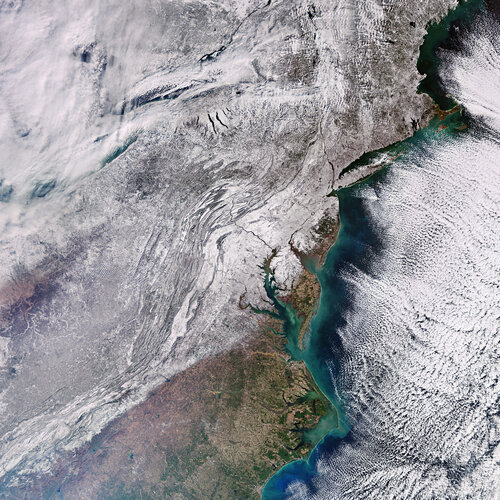Record-breaking Arctic cold weather has swept through much of the United States in the last few weeks. The eastern part of the country was particularly affected with thick snow blanketing most of the region, as this Copernicus Sentinel-3 image shows.
Zoom in to explore this image at its full resolution or click on the circles to learn more.
The harsh winter weather led to travel warnings, road closures and schools having to be shut. More than 100 million people were on windchill alert. Heavy snowfall officially ended the almost two-year-long absence of snow in cities such as New York, Philadelphia, Baltimore and Washington D.C, all of which are under a white mantle in this image, which was acquired on 17 January 2024.
The image spans South Carolina in the south, Maine in the north and Ohio in the west, with most of this vast area under snow.
In the top left corner, the land around Lake Erie and Lake Ontario is blanketed with snow, while thick cloud blocks most of our view over the lakes. The snow-clad Appalachian Mountains are clearly visible stretching across the image from southwest to northeast, almost drawing a separation line between the white landscape and the snow-free area in the bottom of the image.
Along the coast, different colours tint the ocean water. The colour variation is down to different concentrations of sediment and algae: light blue to green denotes a higher concentration and dark blue indicates deeper waters where suspended material is more dilute.



 Image:
Record-breaking Arctic cold weather has swept through much of the United States in the last few weeks. The eastern part of the country was particularly affected with thick snow blanketing most of the region, as this Copernicus Sentinel-3 image shows.
Image:
Record-breaking Arctic cold weather has swept through much of the United States in the last few weeks. The eastern part of the country was particularly affected with thick snow blanketing most of the region, as this Copernicus Sentinel-3 image shows.